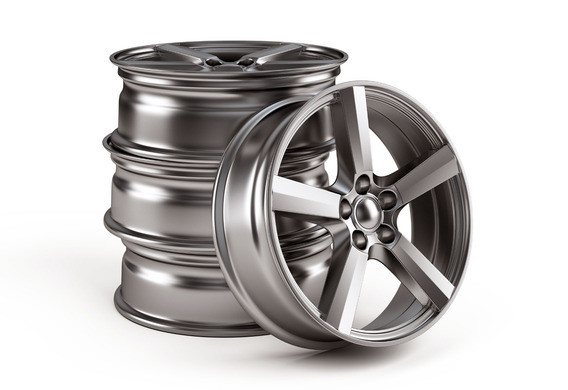
Appointment
The disk drives are made of alloys based on aluminium or magnesium, but in other ways. It includes hot bulk stamping in closed matrices and subsequent treatment-thermal and mechanical.
In our country, the production of forged disks is the technology of aircraft building. With the collapse of the USSR, many enterprises of the aerospace industry stopped receiving state orders; unique expensive equipment was idle. In order to survive, they began to adjust to the production of consumer goods, including automobile discs.
The forged discs of domestic production are highly respected abroad. For example, a motor show in Germany in 2009 was presented by Bentley and Aston Martin cars on Russian M&K discs. Domestic forged disks would have been more popular in the world if not one "but". Their design is not very welcome. Not long ago, an active struggle against this problem is the beginning of Atheforganized. The company has concluded a contract with one of the largest manufacturers and accepts single orders for the development of models of exclusive forged disks. Truth, development and execution take quite a long time.
Device
The material used is a high-strength and plastic alloy of type AV, which has a second name for "aircraft aluminium". It's an aluminium alloy with the addition of copper, silicon, magnesium, and manganese. Initially, the cylinders have a diameter of about 20 cm. They are cut to pieces, depending on the size and thickness of the finished products. In the smelting press shop, they heat up and splits the hydraulic press: they now look like huge thick metal pancakes of about 50 cm in diameter. Then the stubs are reheated to 430 ° C, and the hot stamp is pressed against them, making them convex, in appearance by resembling saucepans. Next comes another warm-up in the furnace and again by stamping to give the correct profile to the disks. Finished goods are sent to control geometry.
The next step is the heat treatment. It is necessary to make the forged discs of strength, plasticity and elasticity, because the structure of the metal becomes melograiny and fibrous. The process exactly repeats the thermal treatment of cast discs: they are injected into ovens within a few hours, cooled in water and artificially aged to remove internal stresses.
Then a few pieces of the shipment are being sent for control. To better see the defects in stamping, the surface of the disc is brighter-it becomes lighter. One disc of the lot is picket and carved out of it for further examination in the laboratory to check the homogeneity of the alloy, the quality control of the heat treatment and the detection of deformation. Especially exposed to marriage is the raindrops (central) of the disk-here the deformation is the most complex from the metallurgical point of view. The mechanical properties of the alloy shall also be monitored. For this, fragments are placed in a special breaking machine.
If all of the listed characteristics are within acceptable tolerances, the batch shall be accepted and mached. On the lathe, the scrap metal is removed and the necessary holes are drined./ Finally, the disc is installed on a milling machine where the programmed design is cut. The figure that is provisionally developed by a computer program may be laconic or vitiated-the main thing is that the wheel is able to withstand a certain load. In some cases, the disks are further polished.
Advantage and disadvantages
The disk drives are much stronger than the other analogues. They are better at carrying out small strikes, and with severe impacts-such as a hole in a hole-do not crack, but only mousing. They also have very high corrosion resistance, which allows to be treated without coating.
In addition, the disks of this type are the easiest to produce today.
The main drawback of the forged disks is their high cost. The cost of the kit exceeds the average price of the stamped analogues. Even the disks are in a lower price category.
There's another minus. Unfortunately, the suspension of the vehicle on which the forged drives are installed is worn very quickly because they do not take part in the reflection of the blows.
In addition, the forged disks have a limited dimension row. For example, only a plant in Russia produces 22-inch (22)-inch (22)-inch (22)-inch (22)-inch (22-inch) companies, with weaker press-presses on all other companies, which can only push small and medium-sized disks.
Despite this, many analysts say the future is behind the wrought disks. The demand for them is growing rapidly every year, as almost all of the indicators outnumber that type of disk.







